Angkor Wat is probably one of the most mystic places I've ever been. Once upon a time, the kings of Cambodia built temples of worship to honour their gods. Each king who reigned built his series of temples, to honour his god of worship, as well as his ancestors (1 for father, 1 for mother etc). So you can imagine how many temples were built over the centuries.
We got a 3 day pass for USD 40, although we only planned to visit Angkor temples for 2 days. Somehow, only 1 day and 3 day passes were available for sale. We visited some of the most important temples. We got a tour guide and driver to bring us around.
Bayon temple
This was the first temple we went. Our tour guide was very knowledgeable and he showed us the picture perfect spots. Like the second photo below which had a nice reflection of Bayon temple. We call this the "face" temple because there were faces of a same man being carved on the temples. Initially, we thought it was Buddha because of the round face. But our tour guide enlightened us that it is the face of Cambodia's legendary king, Jayavarman VII. He built this temple to show his benevolent face as well as to exude authority.
 |
| Intricate carvings on the walls - depicting soldiers and elephants in a war |
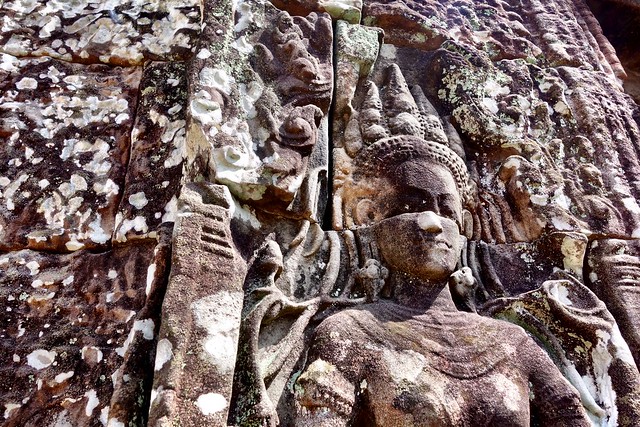 |
| An Apsara dancer - which is a beautiful woman - commonly found on the carvings/statues |
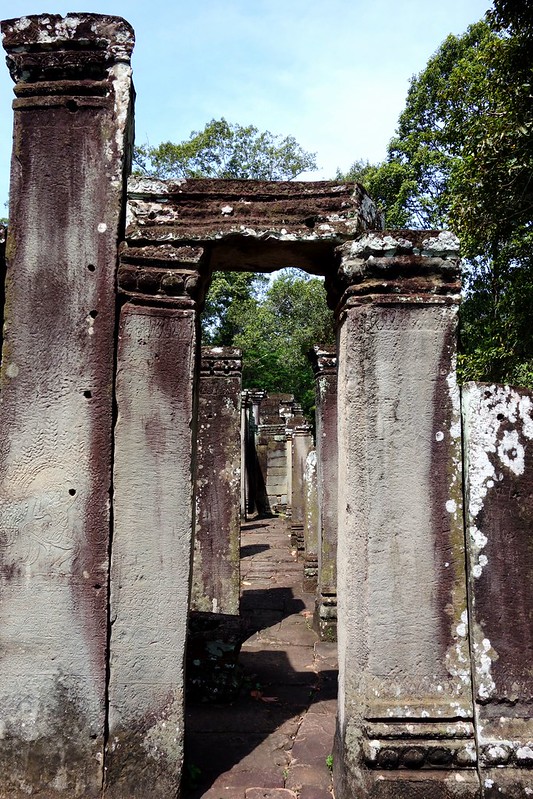 |
| Precarious sighting #1 - Seriously the top of this thing looks dangerous and ready to fall. |
This was one of my favourite temples. Because it has a long flight of stairs. Oh yeah I love stairs. I mean, look at the awesome view when you get to the top. This temple was built earlier than the Bayon temple and it is actually a Hindu temple. A bit of interesting background: Cambodia today is largely a Buddhist country that practises Theravada Buddhism. This is slightly different from the Buddhism practiced by Singaporeans which is Mahayana Buddhism. I am not sure what are the differences. To be explored. But in the historical days, the kings of Angkor practised both Hinduism and Buddhism. So depending on which king reigned, the temple built would be either Hindu or Buddhist temple according to his religious beliefs.
 |
| Froggie seeking enlightenment too.. |
 |
| Why do they climb the precarious-looking stairs? |
 |
| To see these walkways with huge windows |
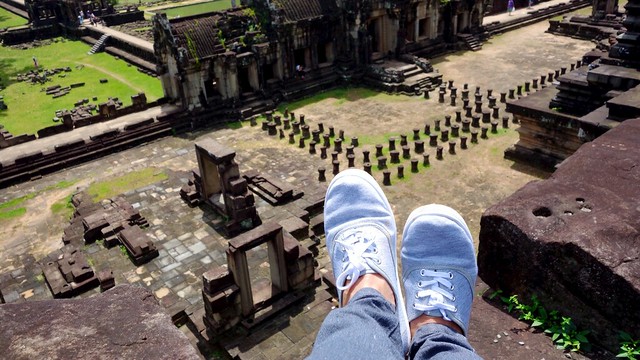 |
| And for this aerial view |
 |
| Huge solid bricks that could weather the storm and age of time. |
Terrace of elephants
These walls which were decorated with stone formations of elephants indicated that elephants played an important part in the historic days. Elephants were used in wars, as well as in agriculture. These walls formed a terrace which the king held celebrations and ceremonies.
Ta Prohm
Ta Prohm was the temple that appeared in the movie Tomb Raider. No Angelina Jolie-wannabes here please. The temple looks really dangerous with the trees' roots growing all over the temples. These strong tall trees looked like they were swallowing the temples. Someday, the temples are going to be destroyed by the weight of these trees. I would think it is a dilemma whether to cut a hundred year old tree and save the temples, or to save the trees and let them ruin the temples.
Angkor Wat
The king of all the temples. Angkor Wat is also the most important temple in Siem Reap and it is a UNESCO world heritage site. This is also the temple that appears on the Cambodia national flag, and also the temple that flooded every tourist's instagram/facebook.
We visited on an afternoon and entered from the west gate, instead of from the main entrance on the east. Mainly because it was quieter and less crowded with the other tourists.
This temple was a Hindu buddhist subsequently converted to a Buddhist temple and it is gigantic.
There were so many tourists and given the steep entrance fee charged, it did not gel with the poverty in Cambodia that we saw. Our tour guide said Angkor Wat is owned by a Vietnamese company. It's really sad to know that Angkor Wat, which is the Cambodians' roots, heritage, culture, and national treasure, was sold to a foreign company. Whether this is true or not, it still doesn't show that the funds were put to the correct uses, given the underdevelopment of the country.
We woke up at 4am to catch the sunrise at Angkor Wat. We left the hotel at around 5am. The road to Angkor Wat was unlit. There was unknown darkness on both sides of the roads. The driver was guided by car headlights only.
When we reached the temple, we had to walk into the compound with the lake. It was a dark walk from the entrance to the lake. So do bring a strong torch light as there are a lot of steps and ledges along the way.
We could hear morning drums and chanting from the nearby monastery, which were disturbed by the excitement of the tourists. The place was very packed, especially at the spots which were best for photo-taking. Luckily we were the early birds.
It was a zen moment to see the sky change colour, and the tranquillity and serenity that surrounded the Angkor Wat towers made me feel at peace with the world.. until a Chinese tourist tried to block everyone's view.
Presenting to you the beauty of Angkor Wat sunrise. #nofilter #natural
Preah Khan
This temple was built by King Jayavarman VII to honour his father. So the Ta Prohm aka tomb raider temple was built for the mother, this was for the father. I don't really like this temple as it had a lot of spiderwebs, musty smell and a lot algae.
Banteay Srei
This was the smallest temple, and also the most different from the rest. The temple was made of pink sandstone. It was suspected that the temple was built by women, because of the really detailed and delicate carvings found.
Pre Rup
Pre Rup is kind of creepy vibe to me. Because it means "turning the body" and it refers to a traditional method of cremation. So it means this served as a royal cremation place.
Stay tuned for the last part of this series which I will record my adventures in the other side of Siem Reap, as well as the food I ate, and a cooking class I attended!
These walls which were decorated with stone formations of elephants indicated that elephants played an important part in the historic days. Elephants were used in wars, as well as in agriculture. These walls formed a terrace which the king held celebrations and ceremonies.
 |
| One of the elephant's trunk was stolen or destroyed by environment. Nobody knows. |
Ta Prohm was the temple that appeared in the movie Tomb Raider. No Angelina Jolie-wannabes here please. The temple looks really dangerous with the trees' roots growing all over the temples. These strong tall trees looked like they were swallowing the temples. Someday, the temples are going to be destroyed by the weight of these trees. I would think it is a dilemma whether to cut a hundred year old tree and save the temples, or to save the trees and let them ruin the temples.
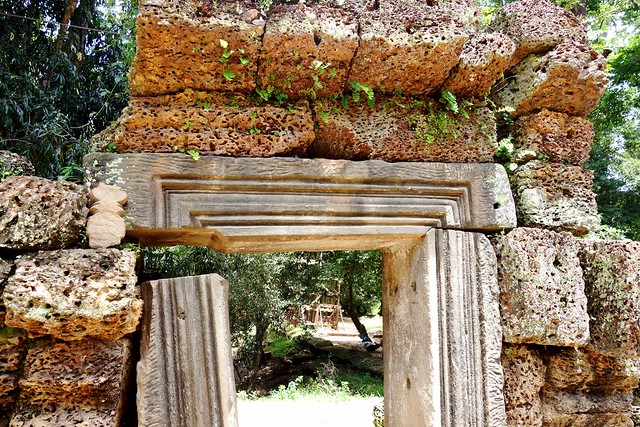 |
| Precarious sighting #2 - roof hanging over a door frame |
 |
| The baby dinosaur carving could lend consistency to the myth that dinosaurs existed |
 |
| Mysterious face on the temple wall that is partially hidden by the overgrowing trees |
The king of all the temples. Angkor Wat is also the most important temple in Siem Reap and it is a UNESCO world heritage site. This is also the temple that appears on the Cambodia national flag, and also the temple that flooded every tourist's instagram/facebook.
We visited on an afternoon and entered from the west gate, instead of from the main entrance on the east. Mainly because it was quieter and less crowded with the other tourists.
This temple was a Hindu buddhist subsequently converted to a Buddhist temple and it is gigantic.
Below shows a huge walkway along the sides of the temple. On the walls were bas relief (sculpted carvings) depicting the Hindu story of Ocean of Milk. In this mythical story, the gods and the demons had to work together to milk a elixer called Amrita from a huge serpent, like in a tug of war. The top right hand picture shows the demons. The bottom right hand picture shows the gods. In the middle is the Hindu god Vishnu. The demons and gods had an agreement that the Amrita belongs to whichever side it appears. Unfortunately, the Amrita appeared at the demons' side. Vishnu pulled wool over the demons by sending apasaras which were beautiful women to distract them, and took away the Amrita from the demons. Vishnu then passed the Amrita to the gods. This story is important in Hinduism as it tells of the importance that the elixer should never fall into the hands of the demons.
This ocean of milking is seen at entrances of many Angkor temples.
 |
| Missing buddha head - possibly looted |
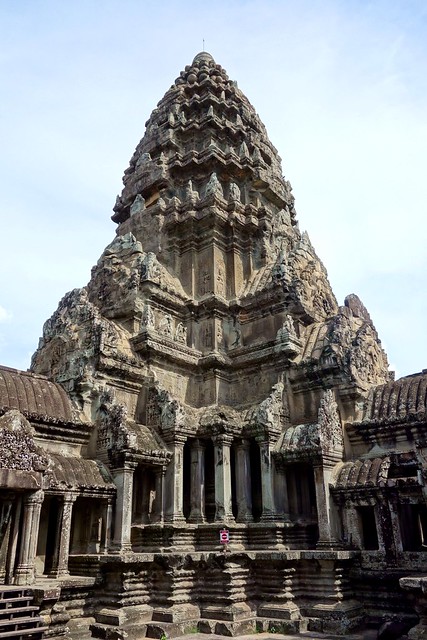 |
| One of the towers of Angkor Wat |
There were at least 100 Buddha statues in this temple. However, not all of them are here. Our tour guide said some were stolen and now in Thailand museums. He asked us to go Thailand and investigate ourselves.
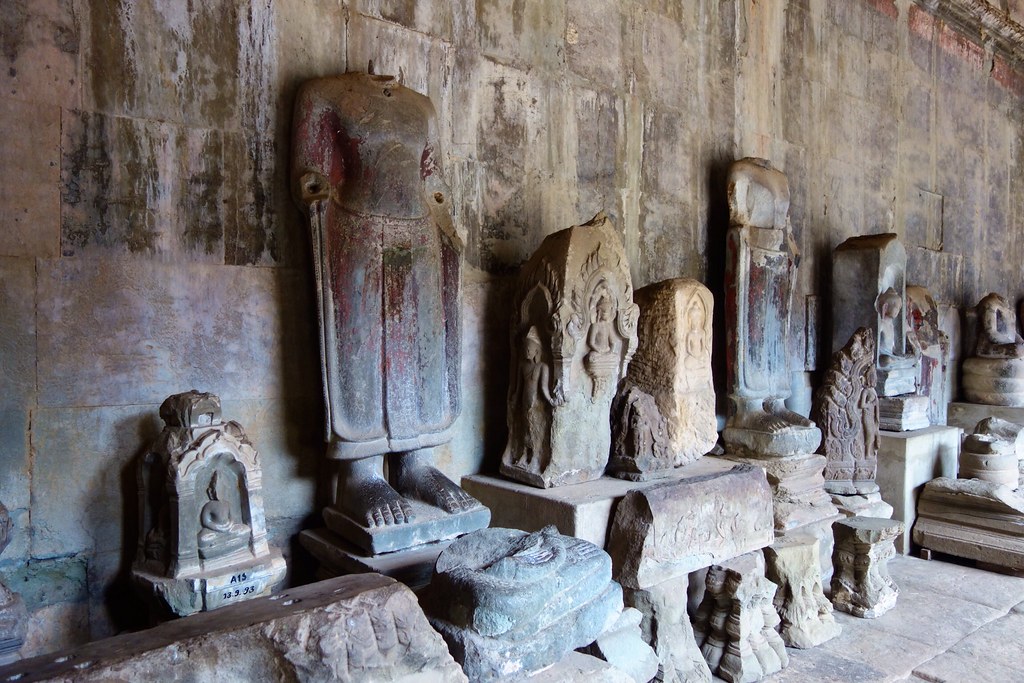 |
 |
We woke up at 4am to catch the sunrise at Angkor Wat. We left the hotel at around 5am. The road to Angkor Wat was unlit. There was unknown darkness on both sides of the roads. The driver was guided by car headlights only.
When we reached the temple, we had to walk into the compound with the lake. It was a dark walk from the entrance to the lake. So do bring a strong torch light as there are a lot of steps and ledges along the way.
We could hear morning drums and chanting from the nearby monastery, which were disturbed by the excitement of the tourists. The place was very packed, especially at the spots which were best for photo-taking. Luckily we were the early birds.
It was a zen moment to see the sky change colour, and the tranquillity and serenity that surrounded the Angkor Wat towers made me feel at peace with the world.. until a Chinese tourist tried to block everyone's view.
Presenting to you the beauty of Angkor Wat sunrise. #nofilter #natural
 |
We were told this is rare sighting that the sun rises above the middle tower. Because it only happens in two months - March & September. We had breakfast nearby after which we continued with the rest of the temples.
|
This temple was built by King Jayavarman VII to honour his father. So the Ta Prohm aka tomb raider temple was built for the mother, this was for the father. I don't really like this temple as it had a lot of spiderwebs, musty smell and a lot algae.
The Ocean of Milk statues flanked the entrance.
It was said that King Jayavarman wanted to merge Buddhism and Hinduism together. Hence, the temples included statues of both Hindu gods (first picture below) and Buddhist gods (second picture below). However, his successor did not allow Buddhism and hence the Buddhist gods statues were removed.
The tree in picture below was cut because the temple would be destroyed if it continued to grow.
 |
| Precarious sighting #3 - Glad I made it back alive! |
This was the smallest temple, and also the most different from the rest. The temple was made of pink sandstone. It was suspected that the temple was built by women, because of the really detailed and delicate carvings found.
Pre Rup
Pre Rup is kind of creepy vibe to me. Because it means "turning the body" and it refers to a traditional method of cremation. So it means this served as a royal cremation place.
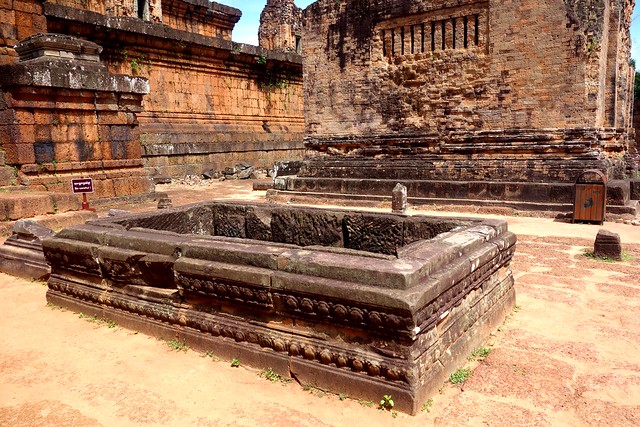 |
| Guess what's this? |
Nevertheless, the view on top was great. After a flight of stairs again.
After visiting the temples, I felt amazed how religion played such a significant role in ancient civilisation. I guess in the past when science and technology are not that advanced, humans turn to gods for help and peace. And it's also quite interesting that these ancient civilisations built by ancestors continue to ensure livelihood of many Cambodians today, and the tourism industry it created forms an important part of the Cambodia's economy.
Stay tuned for the last part of this series which I will record my adventures in the other side of Siem Reap, as well as the food I ate, and a cooking class I attended!

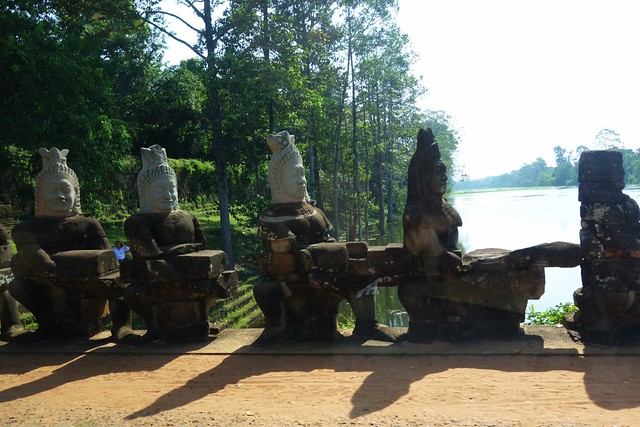
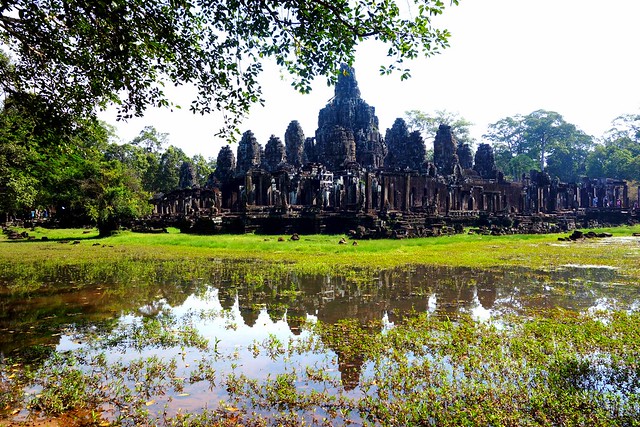
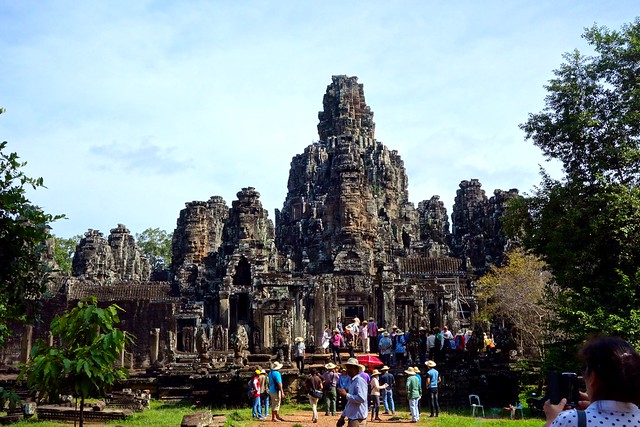
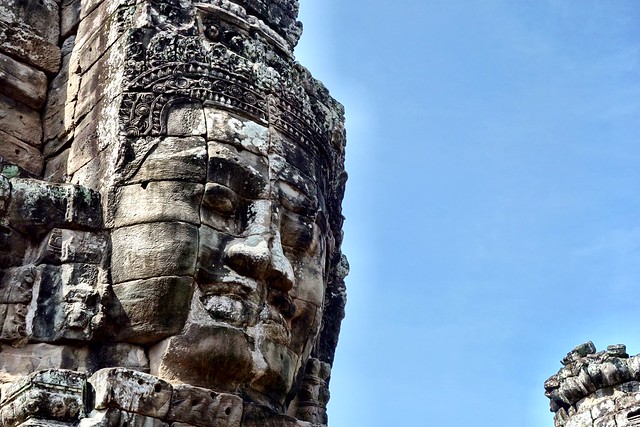
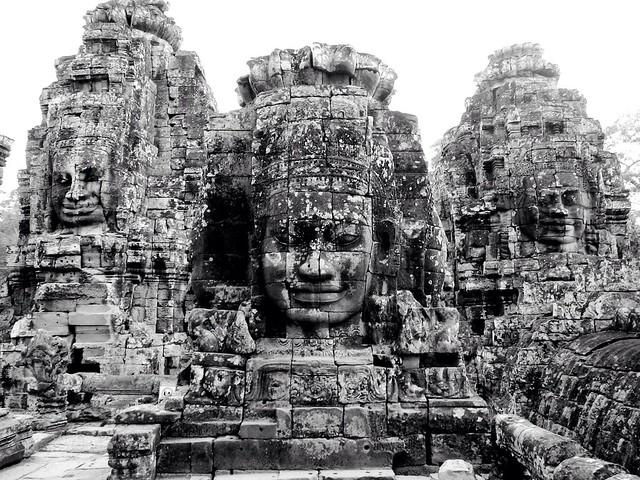



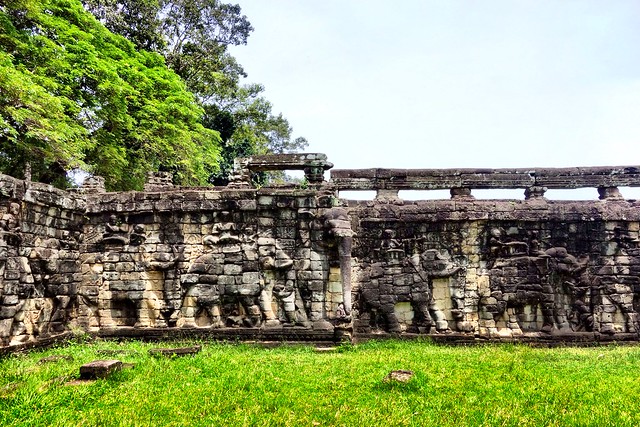


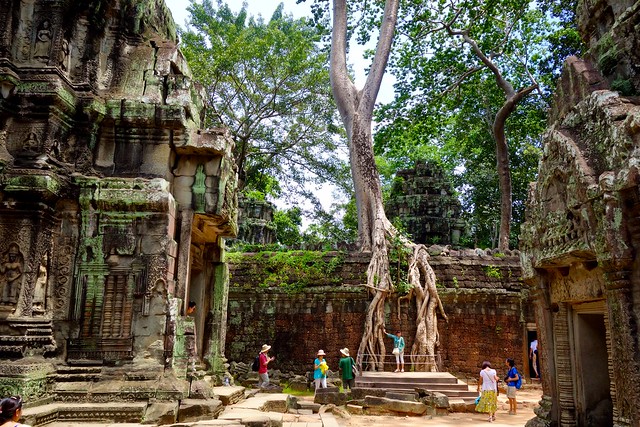

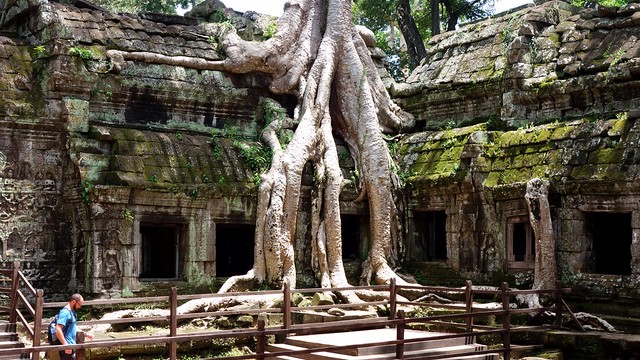
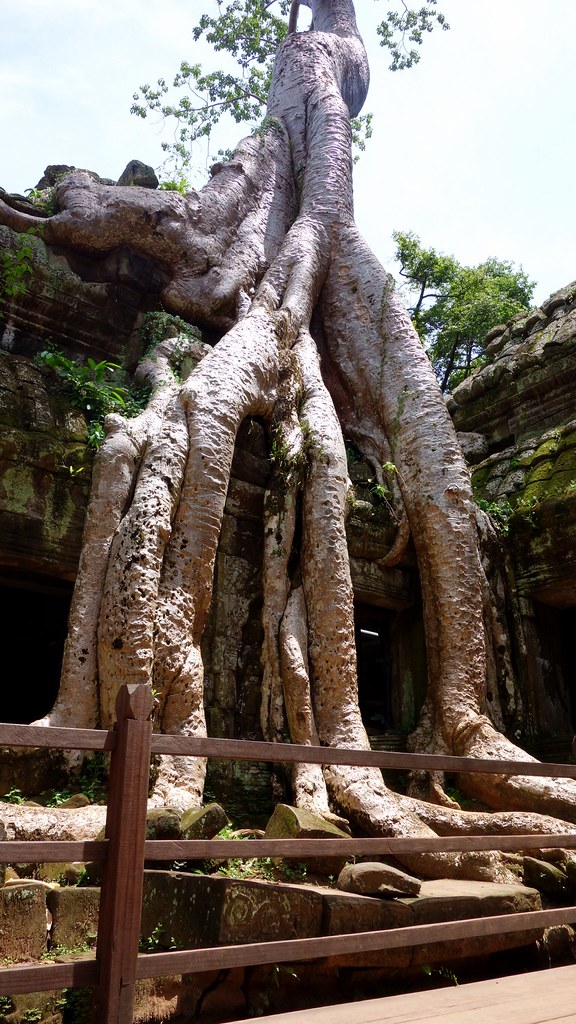



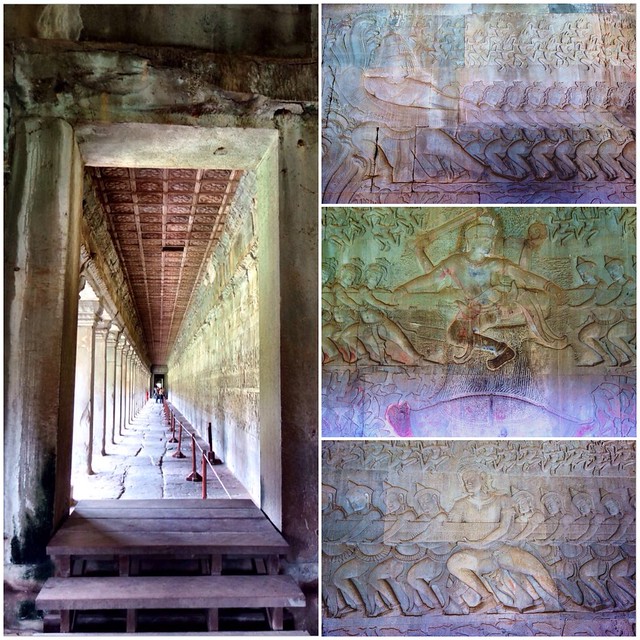

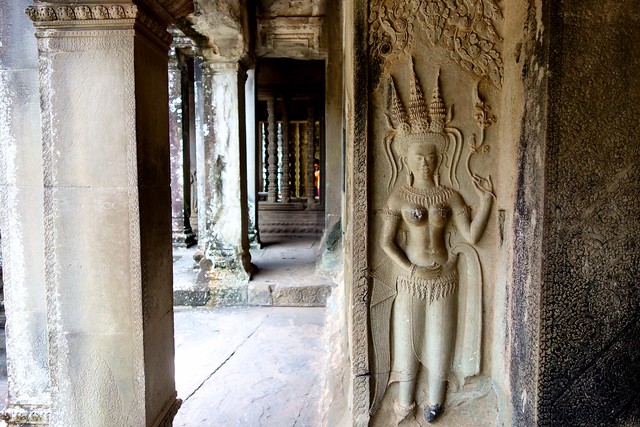
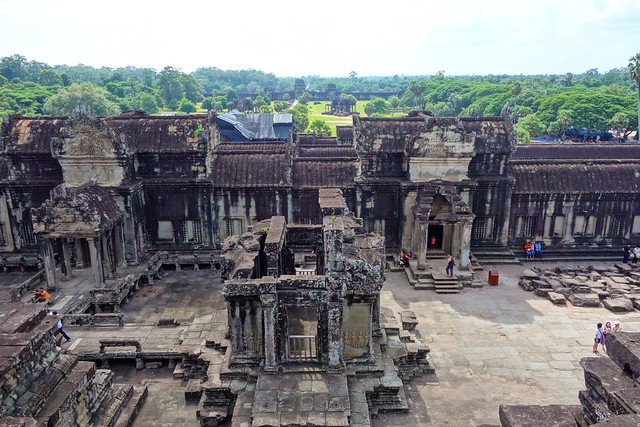


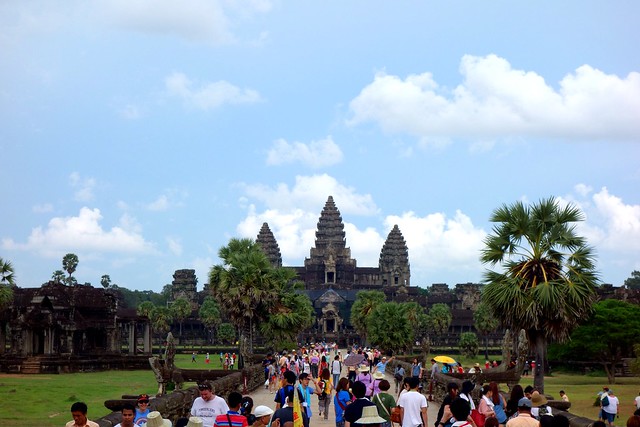
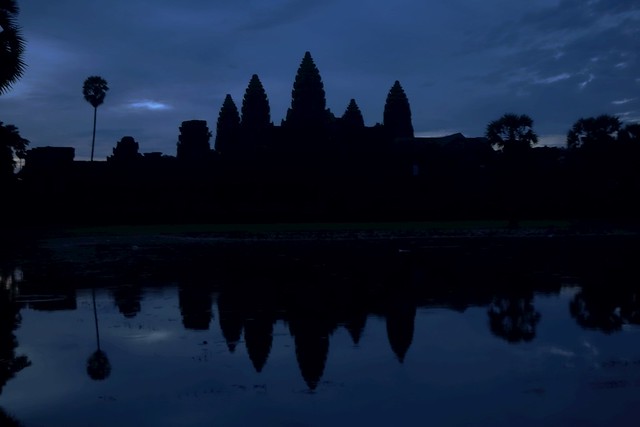
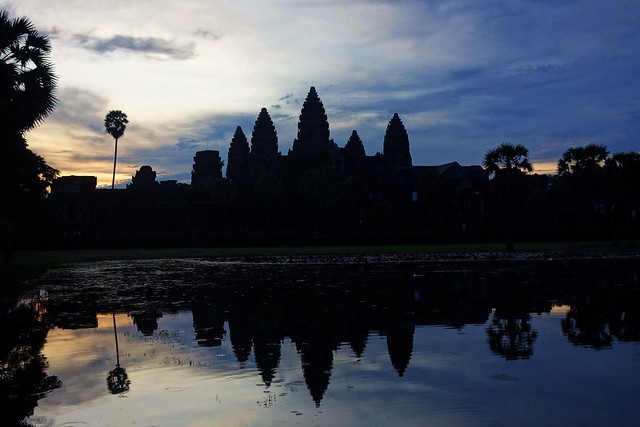
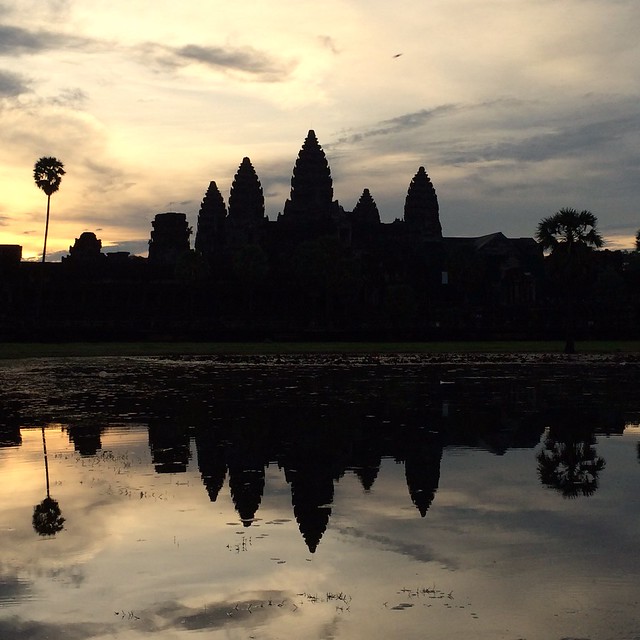
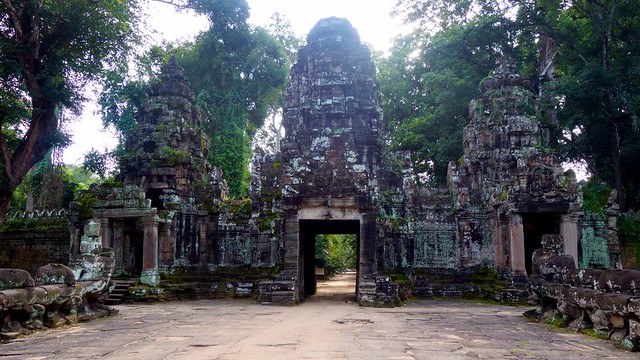

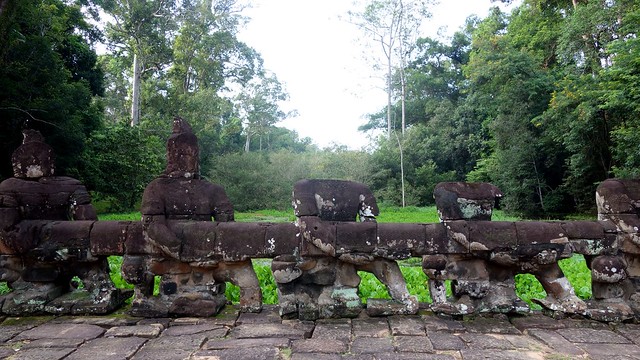
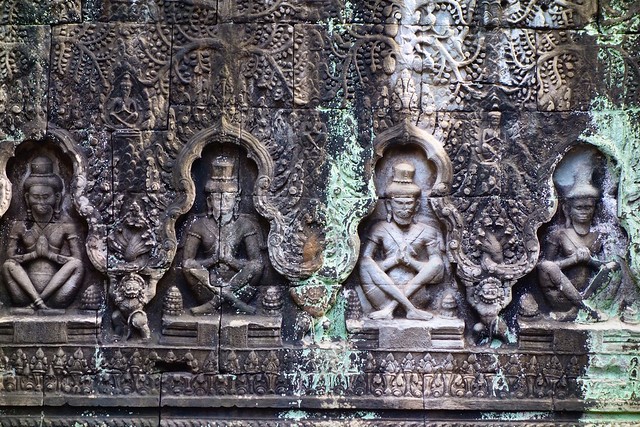


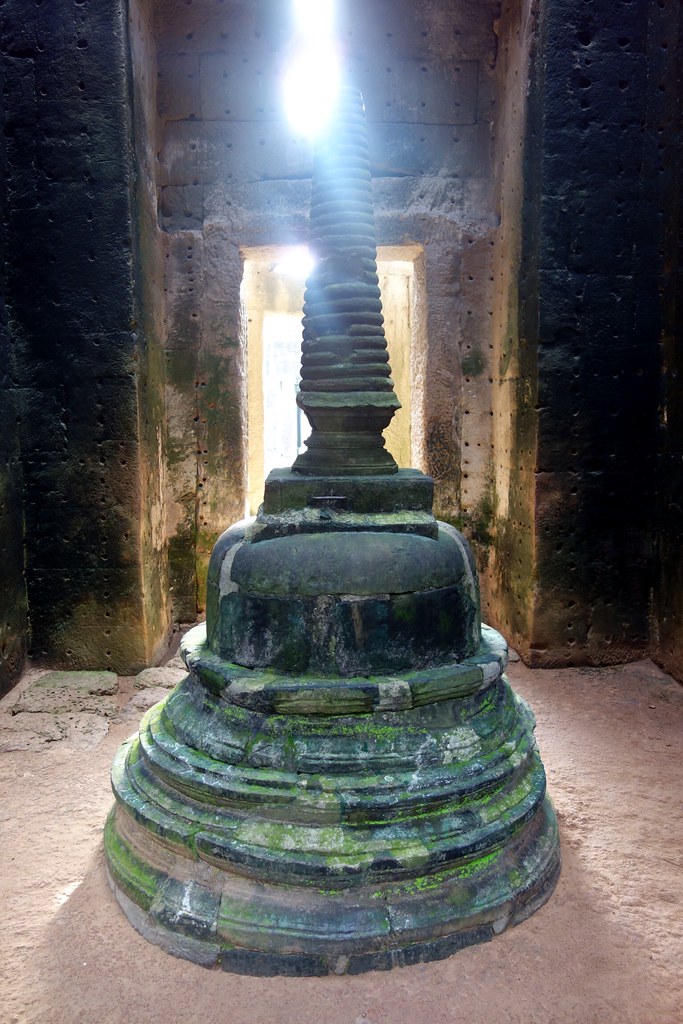


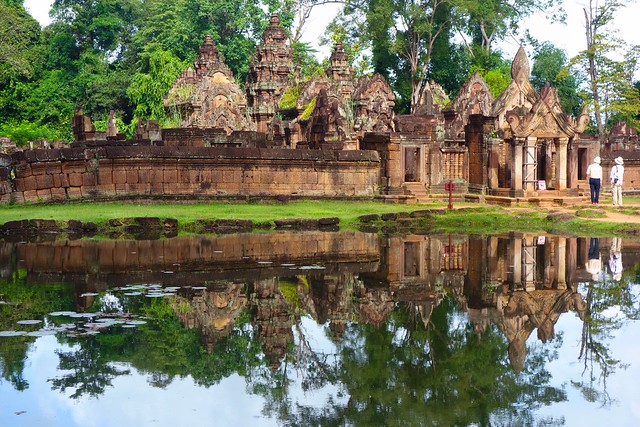
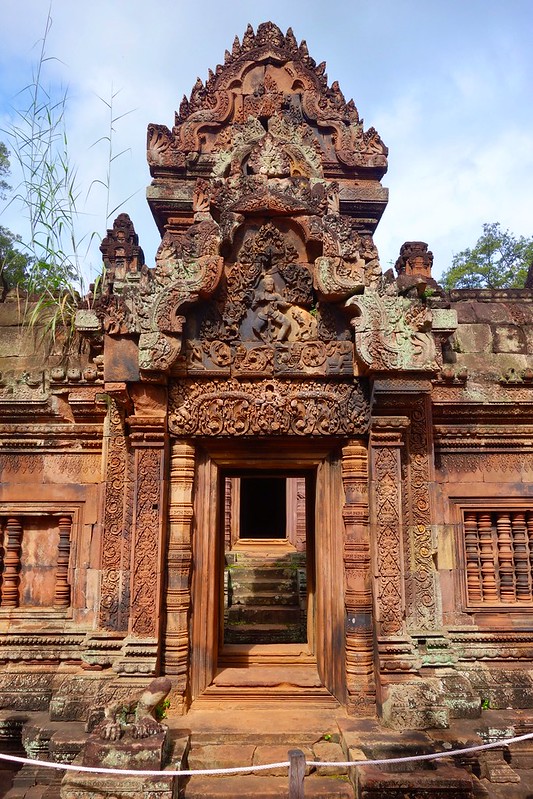
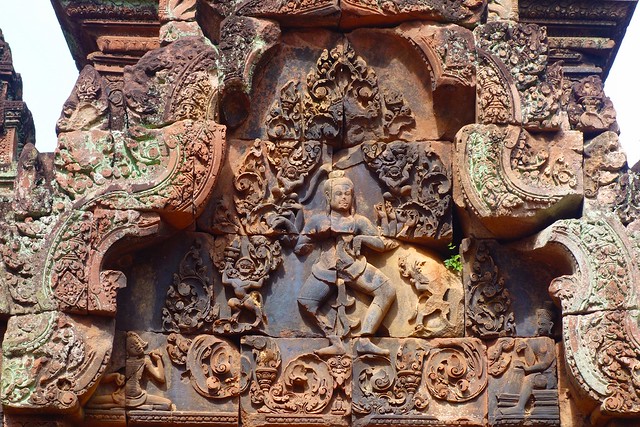
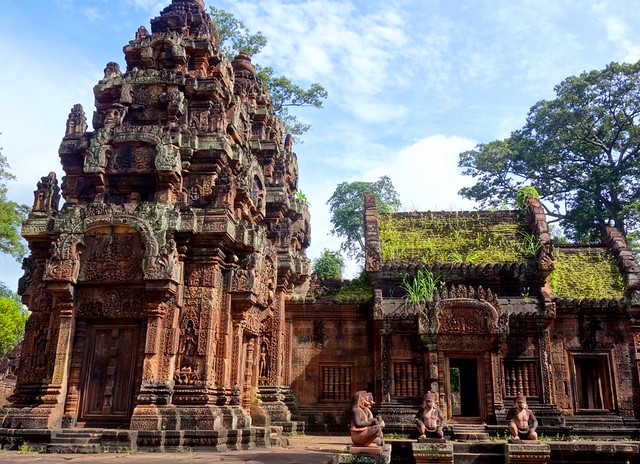

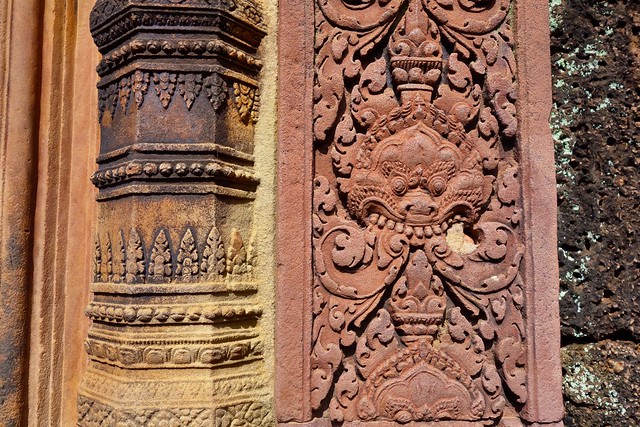

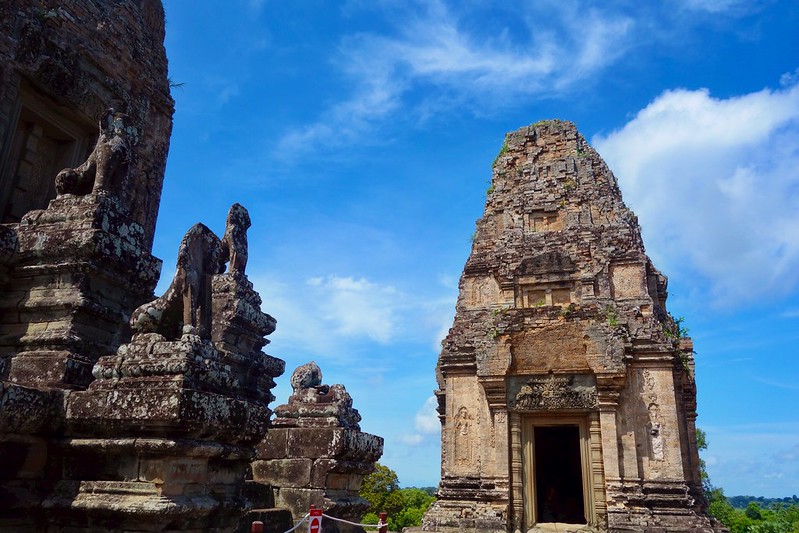
This comment has been removed by a blog administrator.
ReplyDelete